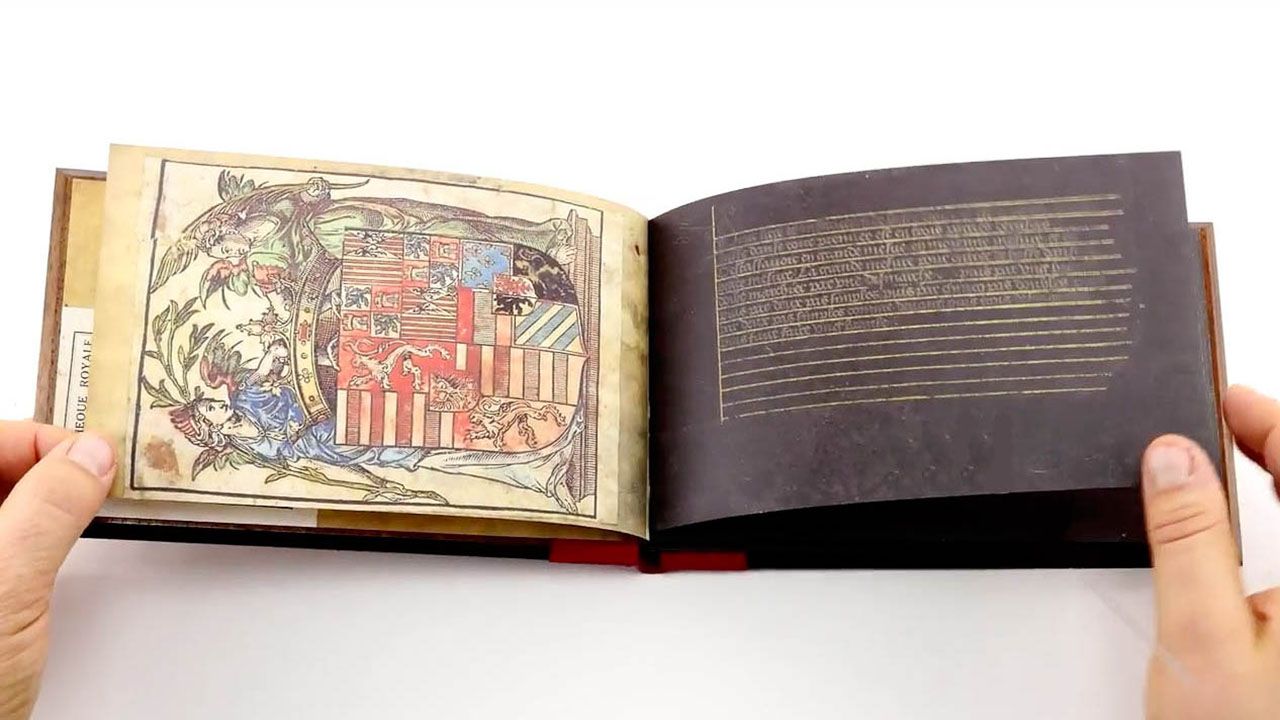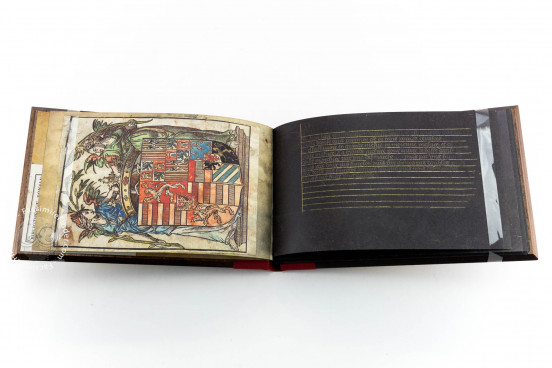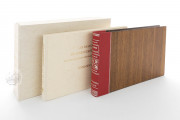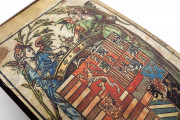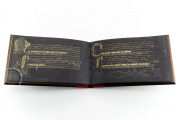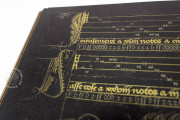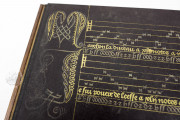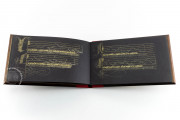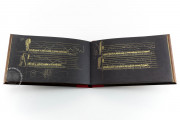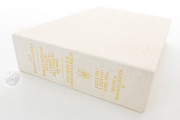The Dancing Book of Margaret of Austria is a rare survival of a manuscript book of early modern European choreography. It is a deluxe manuscript written entirely in silver and gold on parchment dyed dark blue-black. Copied in the last years of the fifteenth century in the Burgundian Lowlands, it was probably made for presentation to Margaret of Austria, Regent of the Netherlands. It boasts fifty-eight masterful large pen-flourished initials incorporating crisscrossing thin and thick pen strokes that often extend into the margins.
The book comprises a theoretical text on the basse danse ("low dance"; fols. 1r-6v) articulating the principles for performing the genre and a collection of dances with notated melodies and an indication of the choreography (fols. 7r-23r).
Pure Materials
The ruling, the text script, the initial capitals, the music staves, the clef signs, and the music notes are all executed in gold and silver. The precious metals are nearly pure, with minimal admixture of baser metals. These unalloyed metals are preserved in pristine, sparkling condition—a rare survival.
Whimsical Inclusions
Some of the pen-flourished initials include caricature profile heads. Two of these dominate the initial V for the dance Venise ("Venice"): an open-mouthed man with a bulbous nose faces to the left and a man with an improbably pointed nose, also with an open mouth, faces to the right (fol. 20v).
Dignified Dancing
The basse danse owes its name to the genre's fundamental principle that the dancers' feet never leave the floor, keeping the action "low" without leaping. It is the sedate dancing of couples, moving in tandem side-to-side and rocking back and front. The dances are often named after cities and regions, such as Le grant Rouen ("Great Rouen"). Some have more evocative titles, such as Triste plaisir ("Sad Pleasure").
Choreography Codified
The language of Renaissance dance is French, and the steps of the dances are represented by minuscule letters in the manuscript's elegant French Bâtarde script: b (branle), d (double), r (reprise), and s (simple). Dances typically begin and end with a révérence, a slow bow or curtsy. In Margaret's book, the letters of the choreography are written in silver, as are the notes of the melodies.
A Printed Bookplate
It has been suggested that Anne of Burgundy (d. 1508), Lady of Ravenstein, had the manuscript made for and gave it to Margaret of Austria (1480-1530), Regent of the Netherlands, before 1501. It is undisputed that Margaret owned the book.
Charles V, Holy Roman Emperor, gave Margeret's library to her niece, Maria (1505-1558), consort of Louis II, King of Bohemia and Hungary. Maria's hand-colored printed bookplate is pasted to the front flyleaf. After Maria's death, the manuscript passed to the Burgundian court library. It was taken to Paris in 1746 and 1794, and the manuscript's leaves were rebound out of order when the pages were mounted on paper guards around 1840-1850.
We have 1 facsimile edition of the manuscript "Dancing Book of Margaret of Austria": Basses Danses de Marguerite d'Autriche (Tanzbüchlein der Margarete von Österreich) facsimile edition, published by Akademische Druck- u. Verlagsanstalt (ADEVA), 1987
Request Info / Price
